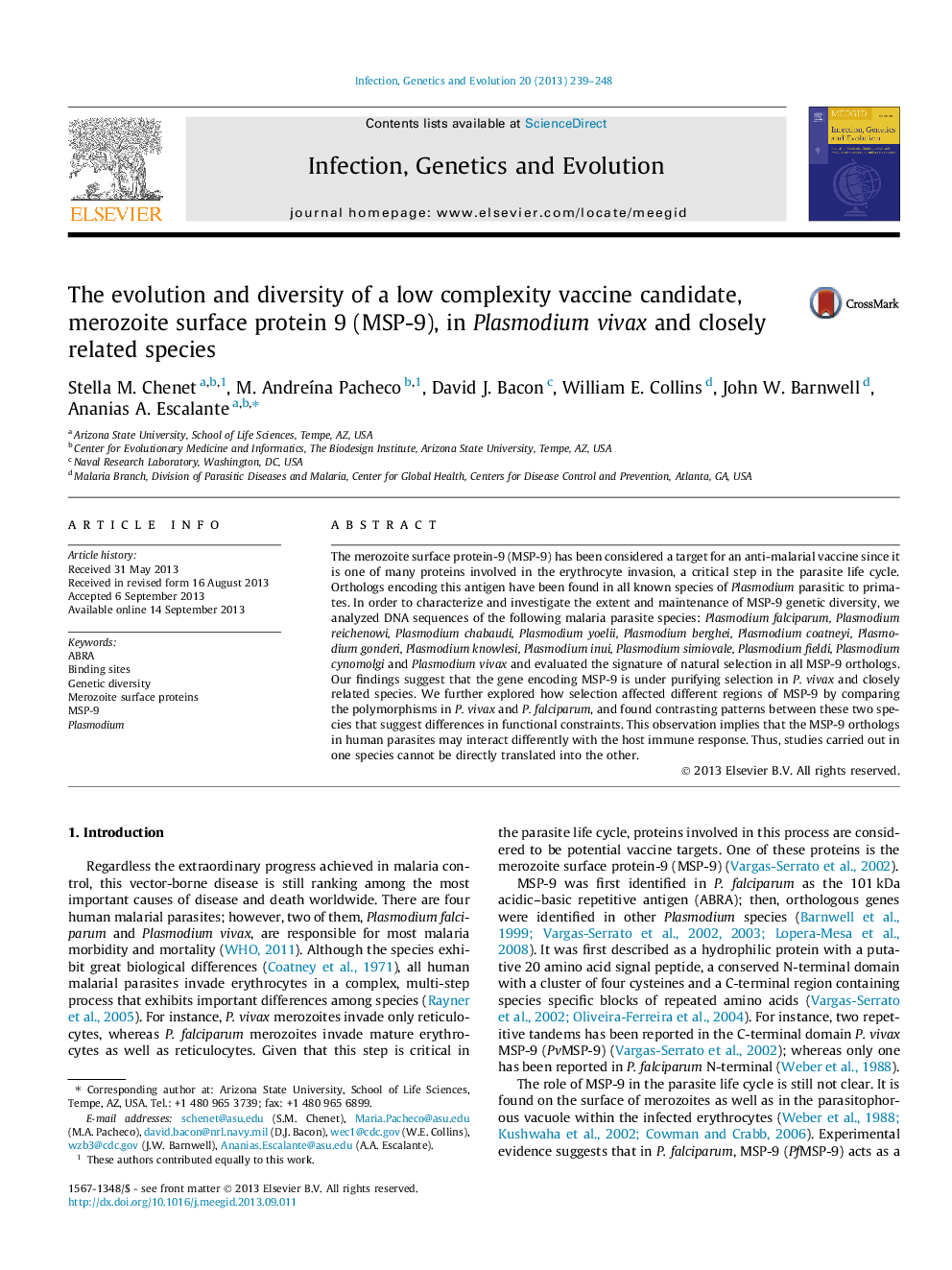| Article ID | Journal | Published Year | Pages | File Type |
|---|---|---|---|---|
| 5909994 | Infection, Genetics and Evolution | 2013 | 10 Pages |
Abstract
The merozoite surface protein-9 (MSP-9) has been considered a target for an anti-malarial vaccine since it is one of many proteins involved in the erythrocyte invasion, a critical step in the parasite life cycle. Orthologs encoding this antigen have been found in all known species of Plasmodium parasitic to primates. In order to characterize and investigate the extent and maintenance of MSP-9 genetic diversity, we analyzed DNA sequences of the following malaria parasite species: Plasmodium falciparum, Plasmodium reichenowi, Plasmodium chabaudi, Plasmodium yoelii, Plasmodium berghei, Plasmodium coatneyi, Plasmodium gonderi, Plasmodium knowlesi, Plasmodium inui, Plasmodium simiovale, Plasmodium fieldi, Plasmodium cynomolgi and Plasmodium vivax and evaluated the signature of natural selection in all MSP-9 orthologs. Our findings suggest that the gene encoding MSP-9 is under purifying selection in P. vivax and closely related species. We further explored how selection affected different regions of MSP-9 by comparing the polymorphisms in P. vivax and P. falciparum, and found contrasting patterns between these two species that suggest differences in functional constraints. This observation implies that the MSP-9 orthologs in human parasites may interact differently with the host immune response. Thus, studies carried out in one species cannot be directly translated into the other.
Related Topics
Life Sciences
Agricultural and Biological Sciences
Ecology, Evolution, Behavior and Systematics
Authors
Stella M. Chenet, M. AndreÃna Pacheco, David J. Bacon, William E. Collins, John W. Barnwell, Ananias A. Escalante,
